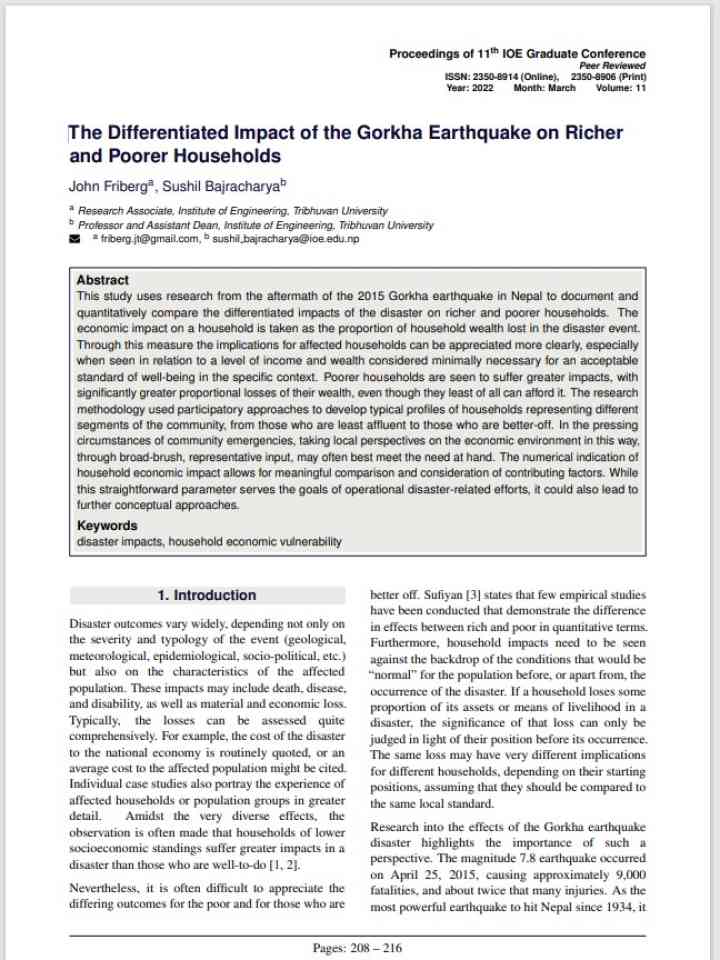The Differentiated Impact of the Gorkha Earthquake on Richer and Poorer Households
This study uses research from the aftermath of the 2015 Gorkha earthquake in Nepal to document and quantitatively compare the differentiated impacts of the disaster on richer and poorer households. The economic impact on a household is taken as the proportion of household wealth lost in the disaster event. Through this measure the implications for affected households can be appreciated more clearly, especially when seen in relation to a level of income and wealth considered minimally necessary for an acceptable standard of well-being in the specific context. Poorer households are seen to suffer greater impacts, with significantly greater proportional losses of their wealth, even though they least of all can afford it.
The research methodology used participatory approaches to develop typical profiles of households representing different segments of the community, from those who are least affluent to those who are better-off. In the pressing circumstances of community emergencies, taking local perspectives on the economic environment in this way, through broad-brush, representative input, may often best meet the need at hand. The numerical indication of household economic impact allows for meaningful comparison and consideration of contributing factors.
Explore further
